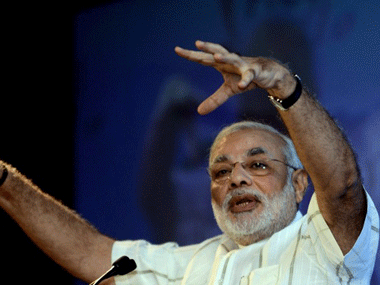In politics, the best way to kill a message is to attack the messenger. The strategy is especially effective in India where the messengers and their motives are invariably suspect. Nitish Kumar is no exception. His recent broadside on secularism has been dismissed by Narendra Modi supporters variously as a nefarious bid for the prime ministership; political pandering to identity politics; petty jealousy inspired by Modi’s superior record and reputation. All of these interpretations may be partly or fully accurate. But irrespective of his motives, Nitish Kumar’s message is no less true. “Only one who can carry with him all diverse sections of people can become the leader of the nation,” Kumar said. And he was exactly right. Cultural diversity is an objective fact of Indian democracy. A prime minister who cannot speak to and on behalf of all his citizens, and inspire some measure of trust, cannot lead them. “You need Atalji’s approach of taking everyone along to run this country,” Nitish Kumar said, adding, “You have to respect everyone. Sometimes you have to wear a cap, sometimes you have to sport a ’tilak’.” [caption id=“attachment_702374” align=“alignleft” width=“380”]  Narendra Modi. AFP.[/caption] A number of Modi supporters have decried the politics of symbolism, but no one was more adept at it than Atal Behari Vajpayee. The man who has become the new touchstone of statesmanship for everyone from Mulayam Singh Yadav to Narendra Modi. But the latter refuses to acknowledge or embrace the one attribute that made Vajpayee a truly national leader. He spoke of and to minorities. Defending his position on the building of the Ayodhya temple, Vajpayee wrote: “Few can deny that Ram occupies an exalted place in India’s culture. He is one of the most respected symbols of our national ethos. Respect for him transcends sectarian barriers.” And he goes on to quote a eulogy to Ram by Allama Iqbal in his defence. But he also goes on emphatically note:
In my reply to the debate in the Lok Sabha, I had stated that, in addition to Ram, many other personalities and places symbolise our national culture. Be it the Dargah of Ajmer Sharif or the shrine of Nizamuddin Aulia in Delhi, the Golden Temple at Amritsar or the Church of St.Francis at Goa – these are all proud symbols our syncretic national culture.
Many liberals who suspect Vajpayee of hidden communalism would be as quick to dismiss this as “empty rhetoric.”. But the fact remains that the words – empty or not – are important, nay necessary. They are an acknowledgement of India’s plurality which is required of all national leaders, and rightfully so. Regional and religious leaders, or some combination of both, may get away with never acknowledging any other than their own. But not men and women who claim to represent India. And yet, Modi is loath to mention the M-word (Muslim or minority), hiding instead behind a different kind of empty secularism. “The only work the Centre has done in the last one year is to steal some percentage of OBC quota and give it to the minorities, trying to play vote-bank politics. Here in Gujarat we have decided not to go for appeasement of a particular section,” he said in one of his anti-UPA speeches, “We have opened the doors of opportunity for all the sections of society. Appeasement for none, development for all’ is our motto.” This non-appeasement policy entails refusing to name minorities except in euphemisms, whether negative or otherwise. “What should we do? Run relief camps for them? Do we want to open baby-producing centers? Hum paanch, humaare pachhees,” he declared back in 2002, at the height of his Gujarat Gaurav Yatra. Modi circa 2012 struck a more conciliatory note but remained obstinately opposed to specifics: “If any part of the body is weak, the entire body cannot be termed as healthy. Similarly, if any community is weak in the state, it cannot be considered as a developed state.” There were flesh-and-blood Muslims garlanding Modi on stage, and chanting Allahu-Akbar off it, but Modi never once mentioned the M-word. His silence was no less hypocritical than that much maligned topi. And so embarrassing was this token gesture of “appeasement,” that Modi failed to mention the Sadbhavna fast while enumerating the high points of his 11-year tenure as Chief Minister. Modi’s silence speaks greater volumes when juxtaposed with his penchant for Hindu metaphors and analogies. In his widely touted recent speech to his NRI audience, incidentally an audience that loves the symbolism of Obama’s Diwali messages, Modi laid out his “very simple” definition of secularism: India First. But that same speech was filled with references to Shivratri. “I am Hanuman and six crore Gujaratis are my Ram whom I serve. Another Congress leader called me a rat. I am proud to be a rat that is vehicle of Ganpati,” he declared during his reelection campaign. His is an odd kind of secularism that flaunts the faith of its speaker but never once acknowledges – leave alone honours – the beliefs of his fellow citizens. Would we be as forgiving of an Abdul Kalam if he only spoke incessantly in Islam-infused language without once referencing any of India’s other religions? Abdul Kalam is respected by right-wingers precisely because he represents a religious syncretism – a man “more likely to quote from the ancient Tamil classic Thirukkural than from Rumi or Iqbal” – that is anathema to Modi and his supporters. What is sauce for the Muslim goose is apparently poison for the Hindu gander. The problem with “topi/tilak” secularism is not that it is empty. It is that it usually stops at only that - empty talk, nothing more. But at least it is a tip of the hat towards India’s plurality. Not even acknowledging the fact that India is a country of topi, tilak, turbans and more is far worse.


)
)
)
)
)
)
)
)
)



